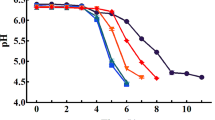Abstract
Chicken meat emulsions prepared using food processor (FP), an indigenous meat cutter (MC) and bowl chopper (BC) were evaluated for physicochemical, texture and electron microscopic studies (SEM). Product yield, emulsion stability, hydration properties and gel strength (N) were significantly (P < 0.05) higher in BC. Total fluid release (TFR), water release (WR) and fat release (FR) was lowest in BC. Significantly (P < 0.05) higher lightness (L) in BC and redness (a) in FP emulsion were observed. Higher firmness, gumminess, chewiness and cohesiveness were observed in BC emulsion. SEM studies revealed a dense and compact protein matrix characteristic of heat induced protein gels. All micrographs showed structures that are compatible with fat globules, muscle fiber, meat protein matrix and heat induced gel/protein matrix. Sensory evaluation showed no significant difference between three treatments for colour, flavour, texture and acceptability scores. Thus, food processor and indigenously developed meat cutter found suitable for producing a stable chicken meat emulsion required for indigenous meat products.

Similar content being viewed by others
References
Allais I, Christophe V, Pierre A, Dufour E (2004) A rapid method based on front-face fluorescence spectroscopy for the monitoring of the texture of meat emulsions and frankfurters. Meat Sci 67:219–229
Andersson K, Andersson A, Tornberg E (1997) Microstructures related to the water-holding, textural and sensory properties of emulsion sausages. In: Dickinson E, Bergenstahl B (eds) Food colloids—Proteins, lipids and polysaccharides. Royal Society of Chemistry, Cambridge, pp 29–42
AOAC (2000) Official methods of analysis of AOAC International, 17th edn. Association of Official Analytical Chemistry, Maryland
Ashie IN, Simpson BK, Ramaswamy HS (1997) Changes in texture and microstructure of pressure-treated fish muscle tissue during chilled storage. J Muscle Foods 8:13–32
Barbut S (2006) Effect of caseinate, whey and milk powders on the texture and microstructure of emulsified chicken meat batters. LWT Food Sci Technol 39:660–664
Bourne MC (1976) Texture profile analysis. Food Technol 32:62–66
Cofrades S, Lopez-Lopez FP, Solas MT, Bravo L, Jimenez-Colmenero F (2008) Influence of different types and proportions of added edible seaweeds on characteristics of low-salt gel/emulsion meat systems. Meat Sci 79:767–776
Comfort S, Howell NK (2003) Gelation properties of salt soluble meat protein and soluble wheat protein mixtures. Food Hydrocolloids 17:149–159
Hammer GF (1998) Microbial transglutaminase and diphosphate in finely comminuted cooked sausage. Fleischwirtschaft 78:1155–1162
Hermansson AM (1982) Gel characteristics–structure as related to texture and water binding of blood plasma gels. J Food Sci 47:1965–1972
Hung SC, Zayas JF (1992) Functionality of milk proteins and corn germ protein flour in comminuted meat products. J Food Qual 15:139–152
Jones KW, Mandigo RW (1982) Effects of chopping temperature on the microstructure of meat emulsions. J Food Sci 47:1930–1935
Keeton JT (1983) Effect of fat and sodium chloride/phosphate level on the chemical and sensory properties of pork patties. J Food Sci 48:878–881
Kuraishi C, Sakamoto J, Yamazaki K, Susa Y, Kuhara C, Soeda T (1997) Production of restructured meat using microbial transglutaminase without salt or cooking. J Food Sci 62:488–490
Mittal GS, Usborne WR (1985) Meat emulsion extenders. Food Technol 39:121–130
Nio N, Motoki M, Takinami K (1986) Gelatin of protein emulsion by transglutaminase. Agric Biol Chem J 50:1409–1412
Pietrasik Z (1999) Effect of content of protein, fat and modified starch on binding, textural characteristics, and colour of comminuted scalded sausages. Meat Sci 51:17–25
Pietrasik Z, Li-Chan ECY (2002) Binding and textural properties of beef gels as affected by protein, k-carrageenan and microbial transglutaminase addition. Food Res Int 35:91–98
Pietrasik Z, Jarmoluk A, Shand PJ (2007) Effect of non-meat proteins on hydration and textural properties of pork meat gels enhanced with microbial transglutaminase. LWT Food Sci Technol 40:915–920
Samejima K, Takahashi K, Yasui T (1976) Heat induced denaturation of myosin total rod. Agric Biol Chem 40:2455–2460
Schwartz WC, Mandigo RW (1976) Effect of salt, sodium tripolyphosphate and storage on restructured pork. J Food Sci 41:1266–1269
Su YK, Bowers JA, Zayas JF (2000) Physical characteristics and microstructure of reduced-fat frankfurters as affected by salt and emulsified fats stabilized with non meat. proteins. J Food Sci Technol 65:128–132
Swatland HJ, Barbut S (1990) Fibre-optic spectrophotometry for predicting lipid content, pH and processing loss of comminuted meat slurry. Int J Food Sci Technol 25:519–526
Tornberg E (2005) Effect of heat on meat proteins-Implications on structure and quality of meat products. Meat Sci 70:493–508
Townsend WE, Ackerman SA, Witnauer LP, Palm WE, Swift CE (1971) Effects of types and levels of fat and rates and temperatures of comminution on the processing and characteristics of frankfurters. J Food Sci 36:261–265
Tseng TF, Liu DC, Chen MT (2000) Evaluation of transglutaminase on the quality of low salt chicken meat balls. Meat Sci 55:427–431
Xiong YL (2000) Meat processing. In: Nakai S, Modler HW (eds) Food proteins: processing applications. Wiley–VCH, New York, pp 89–145
Acknowledgements
This research was supported by the National Agricultural Innovation Project (NAIP), Indian Council of Agricultural Research (ICAR) through its subproject entitled “A Value Chain on Novelty Pork Products under Organized Pig Farming System”.
Author information
Authors and Affiliations
Corresponding author
Rights and permissions
About this article
Cite this article
Devatkal, S.K., Manjunatha, M., Narsaiah, K. et al. Evaluation of quality characteristics of chicken meat emulsion/nuggets prepared by using different equipment. J Food Sci Technol 51, 511–518 (2014). https://doi.org/10.1007/s13197-011-0518-6
Revised:
Accepted:
Published:
Issue Date:
DOI: https://doi.org/10.1007/s13197-011-0518-6




